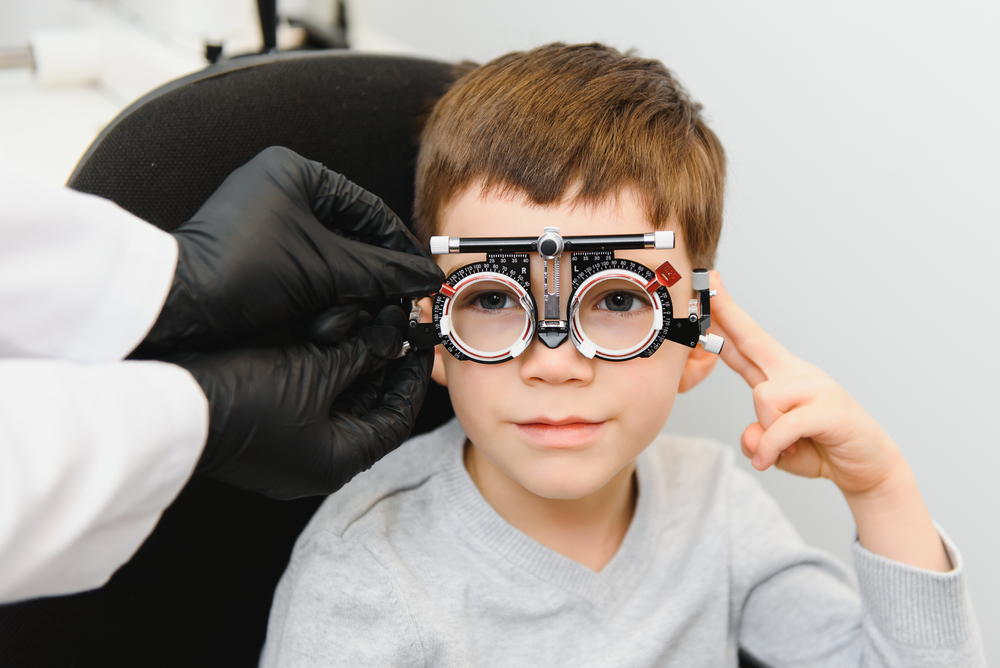
Growing up in Las Vegas means children are surrounded by technology, both in and out of the classroom. From homework on laptops to video games with friends, screen time has become part of everyday life for local families. With so much time spent in front of screens, it is important to understand how these habits could affect your child’s eyesight, especially when it comes to the increasing risk of myopia.
What Is Myopia?
Myopia, commonly known as nearsightedness, is a vision condition in which distant objects appear blurry while close-up objects can be seen clearly. Myopia often develops during childhood and can progress as a child grows. Left unaddressed, it can lead to significant vision problems and even increase the risk of eye health complications later in life.
How Screen Time Can Contribute to Myopia
With digital devices becoming a part of daily life for children, concerns about the impact of screen time on eye health are growing. Studies have shown that increased time spent on computers, tablets, smartphones, and even reading up close can contribute to the development and progression of myopia.
When children focus on screens or books at a close distance for extended periods, their eyes adapt to near work. This continuous demand on the eyes can encourage the eyeball to lengthen over time, which is the primary physical change associated with myopia. Additionally, more screen time often means less time spent outdoors, which research suggests is important for healthy visual development and may help protect against myopia.
Other Risk Factors for Myopia
While screen time is a major concern, other factors also play a role in the development of myopia in children:
• Genetics: Children with one or both parents who are nearsighted have a higher risk.
• Limited Outdoor Activity: Spending little time outside has been linked to increased myopia rates.
• Age: Myopia typically develops between ages 6 and 14, but it can start even earlier.
The Importance of Regular Pediatric Eye Exams
Many children with myopia may not recognize their own vision changes. That’s why regular pediatric eye exams are crucial. Early detection allows for timely intervention, which can slow progression and protect long-term eye health. Pediatric eye exams can spot the early signs of myopia - even before your child complains of blurry vision.
When to Consider Myopia Control Treatments
If your child is diagnosed with myopia, your eye doctor may recommend myopia control treatments to help slow its progression and protect vision. Some of the most effective options we offer include:
• Atropine Eye Drops: Low-dose atropine drops used at bedtime can slow myopia progression in some children.
• MiSight® 1 Day Contact Lenses: These FDA-approved daily contact lenses are specifically designed to slow the progression of myopia in children.
• Orthokeratology (Ortho-K): Specially designed overnight contact lenses temporarily reshape the cornea, allowing for clear vision during the day and helping to slow myopia progression.
Your eye doctor can help you decide when these treatments are appropriate based on your child’s age, prescription, and risk factors.
Schedule Your Child’s Eye Exam at Eyediology Vision Care Today
As screen time continues to be a part of everyday life, it’s essential to be aware of its impact on your child’s vision and risk of developing myopia. Regular eye exams, limiting prolonged near work, encouraging outdoor play, and considering early myopia control treatments when necessary can make a lasting difference in your child’s eye health.
If you have concerns about your child’s nearsightedness or want to learn more about myopia management, schedule a pediatric eye exam with Eyediology Vision Care for personalized treatment. Visit our office in Las Vegas, Nevada, or call (702) 912-4254 to book an appointment today.




